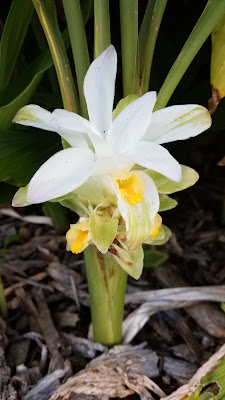ʻŌlena (Curcuma longa)

ʻŌlena rhizomes may be a dull color outside but are brightly colored inside! It can be made into a fine powder to be saved and used for later. ʻŌlena is known to be the Hawaiian turmeric! It was a canoe plant that was brought over by the early polynesians. It has a very beautiful white and yellow flower, but the part that is commonly used is found within the ground. They most important part of the plant are called rhizomes, which are essentially underground stems. The flesh can be either dark yellow or orange. It can be pounded and pressed to extract the juice, or cut and dried to be ground up into a powder. ʻŌlena is a very important plant because of it's medicinal properties. The juice of the ʻōlena helps with respiratory and ear infections. It can also be good for your sinuses. You can mix ʻōlena powder into hot water and drink it. It is very good! Whenever I'm not feeling well, my boyfriend always tells me to use ʻōlena.


